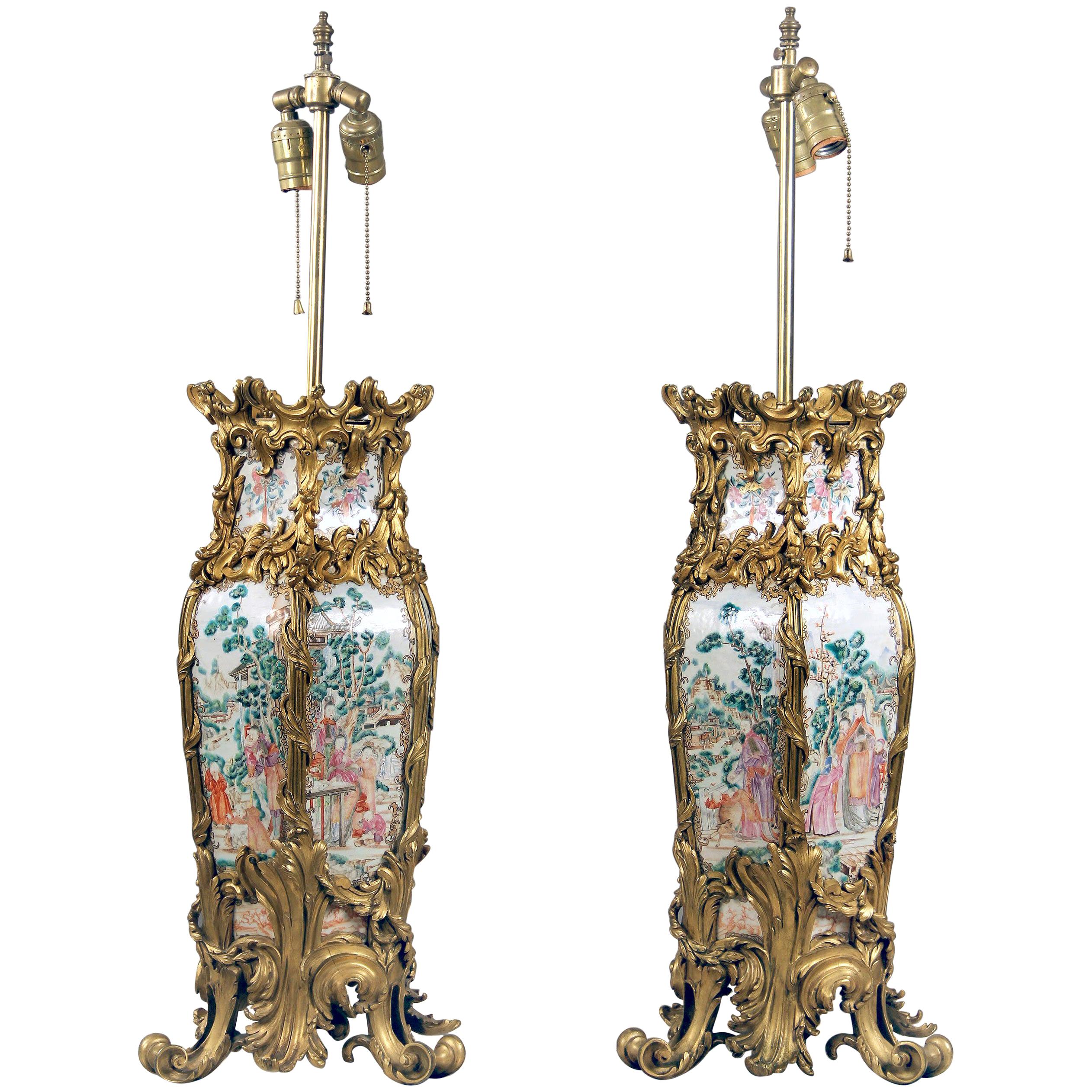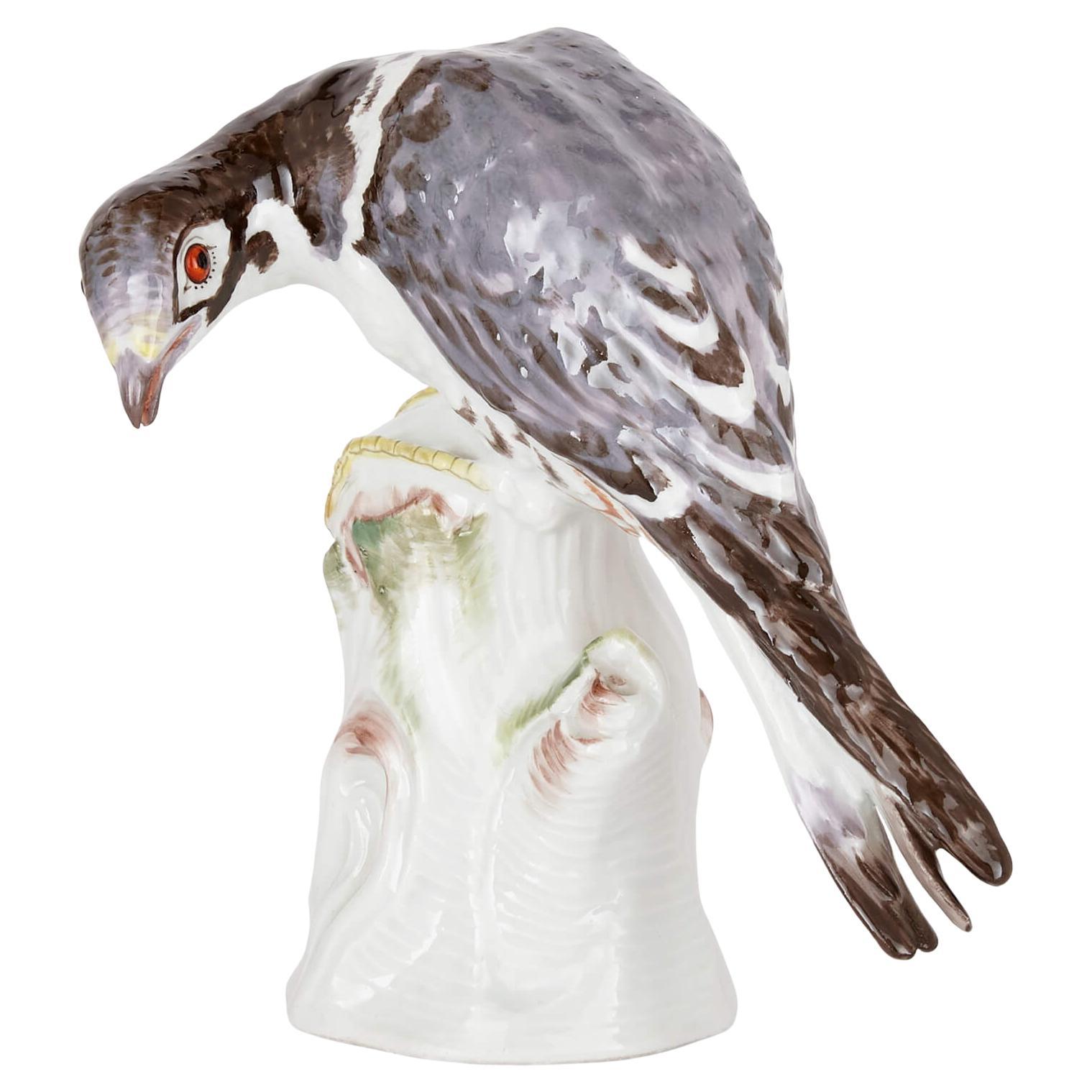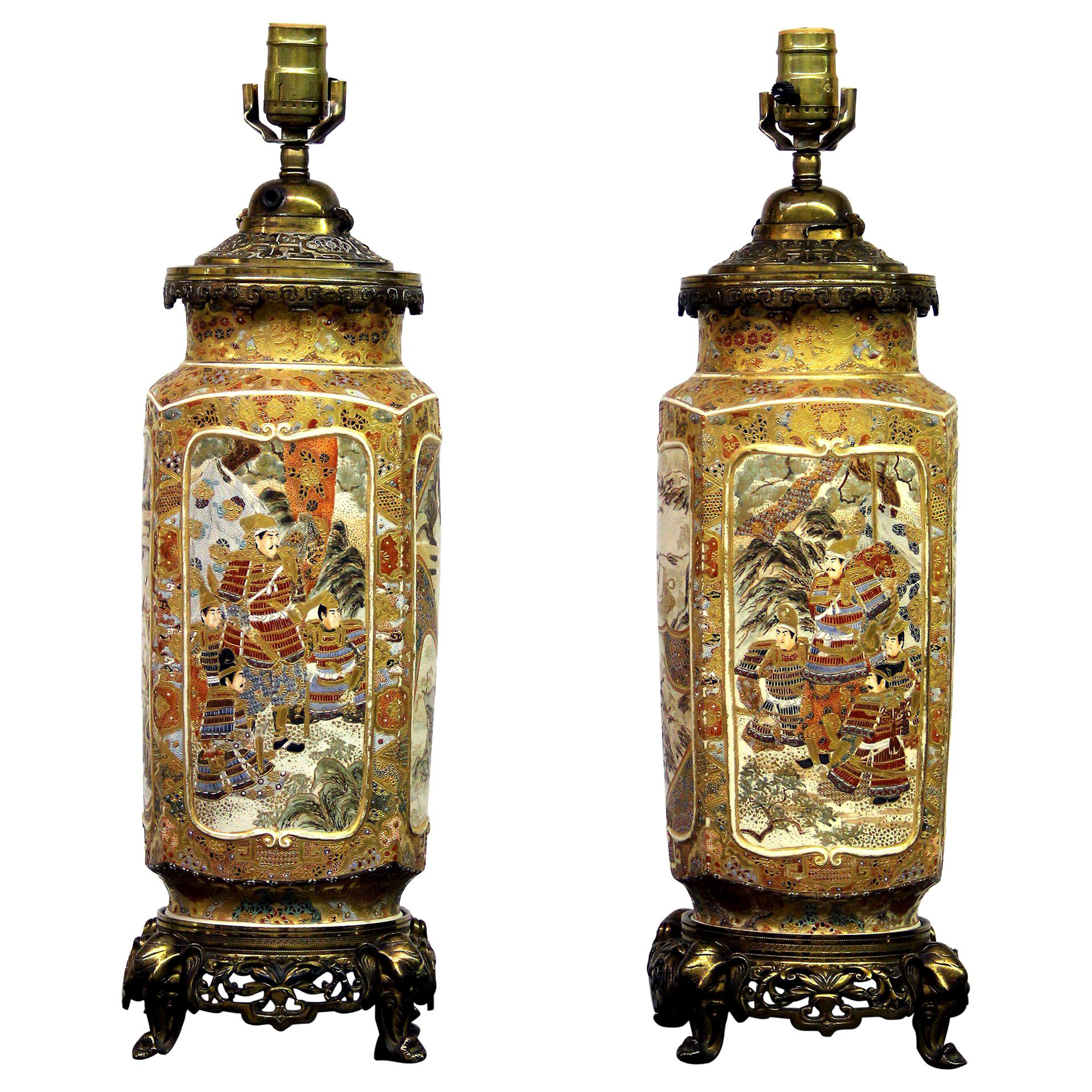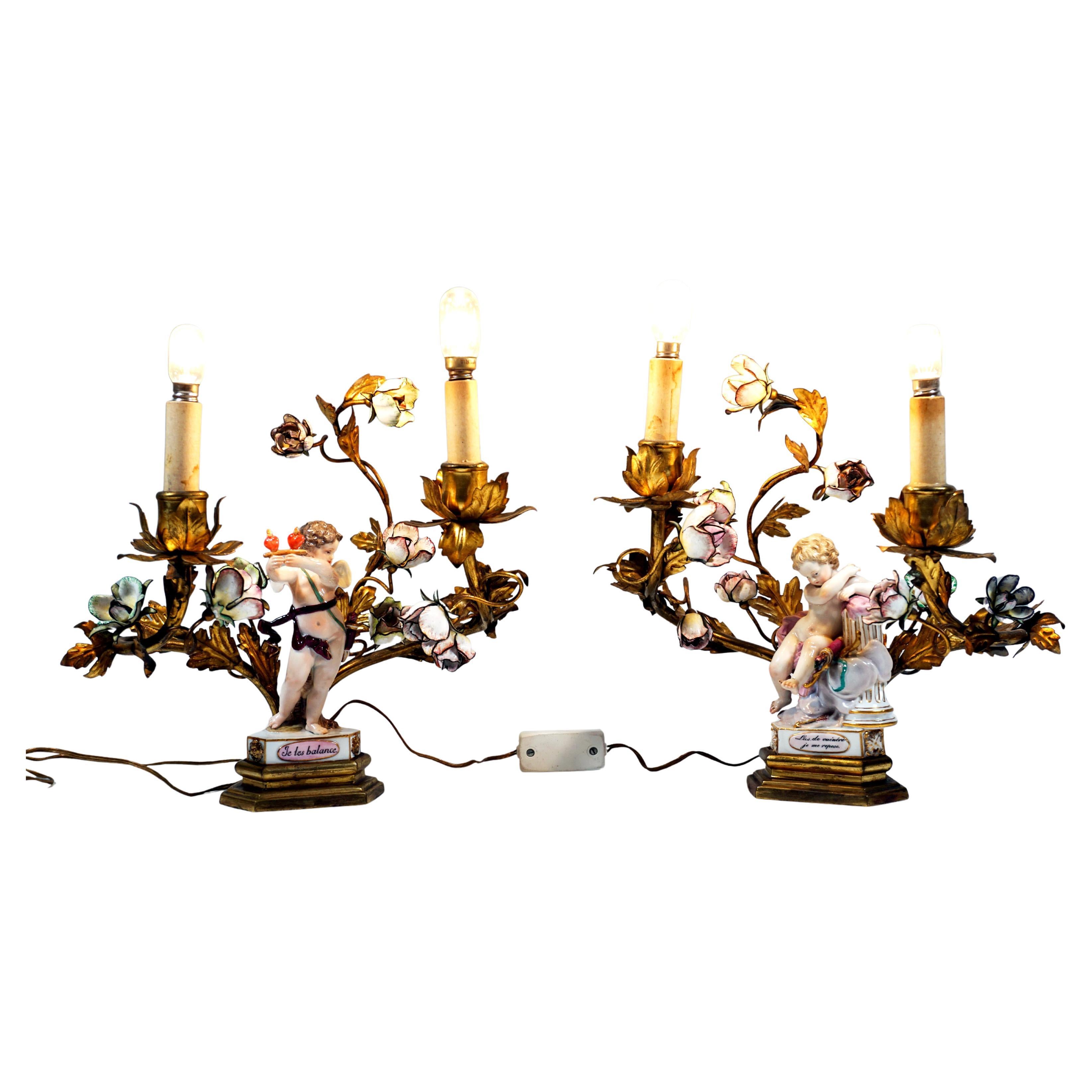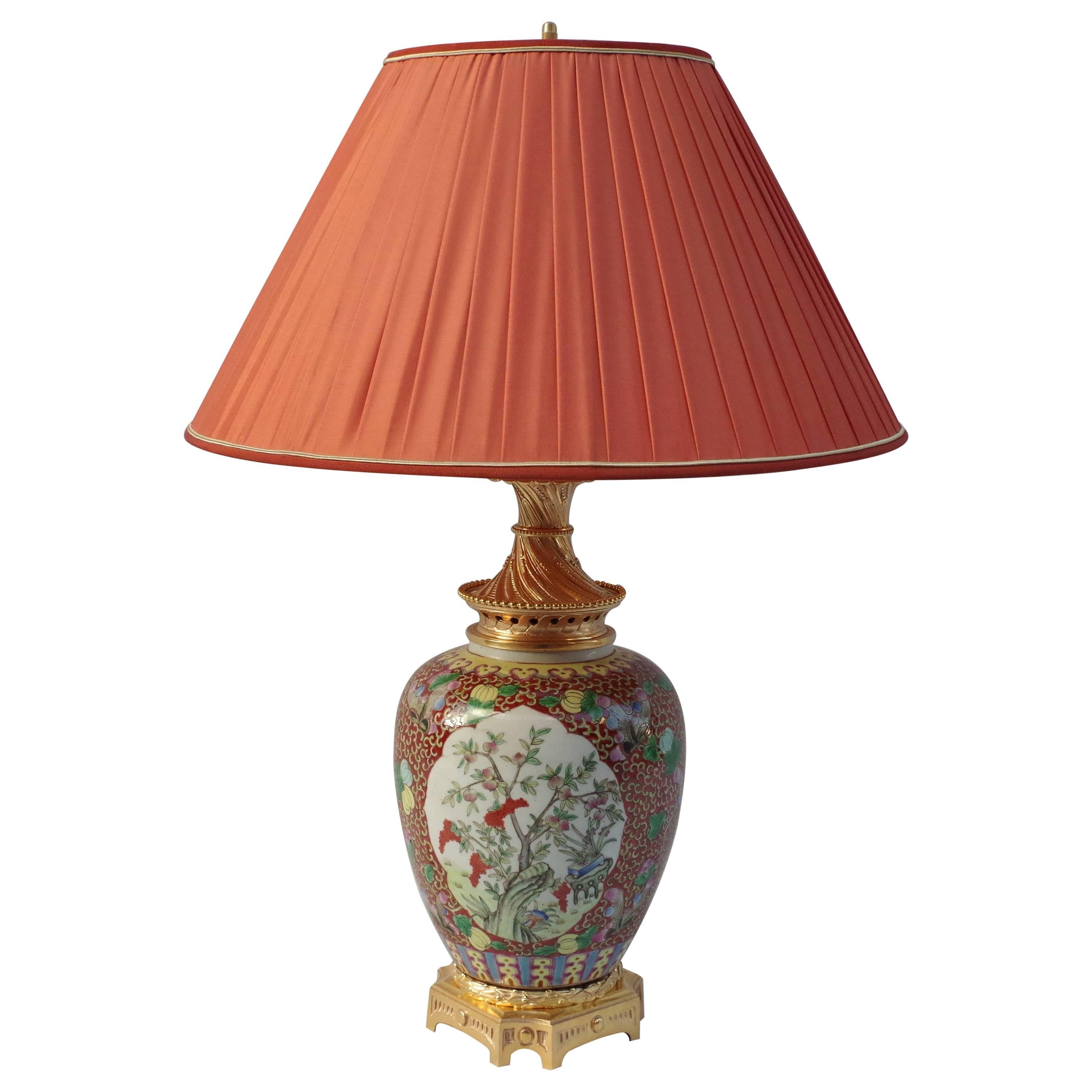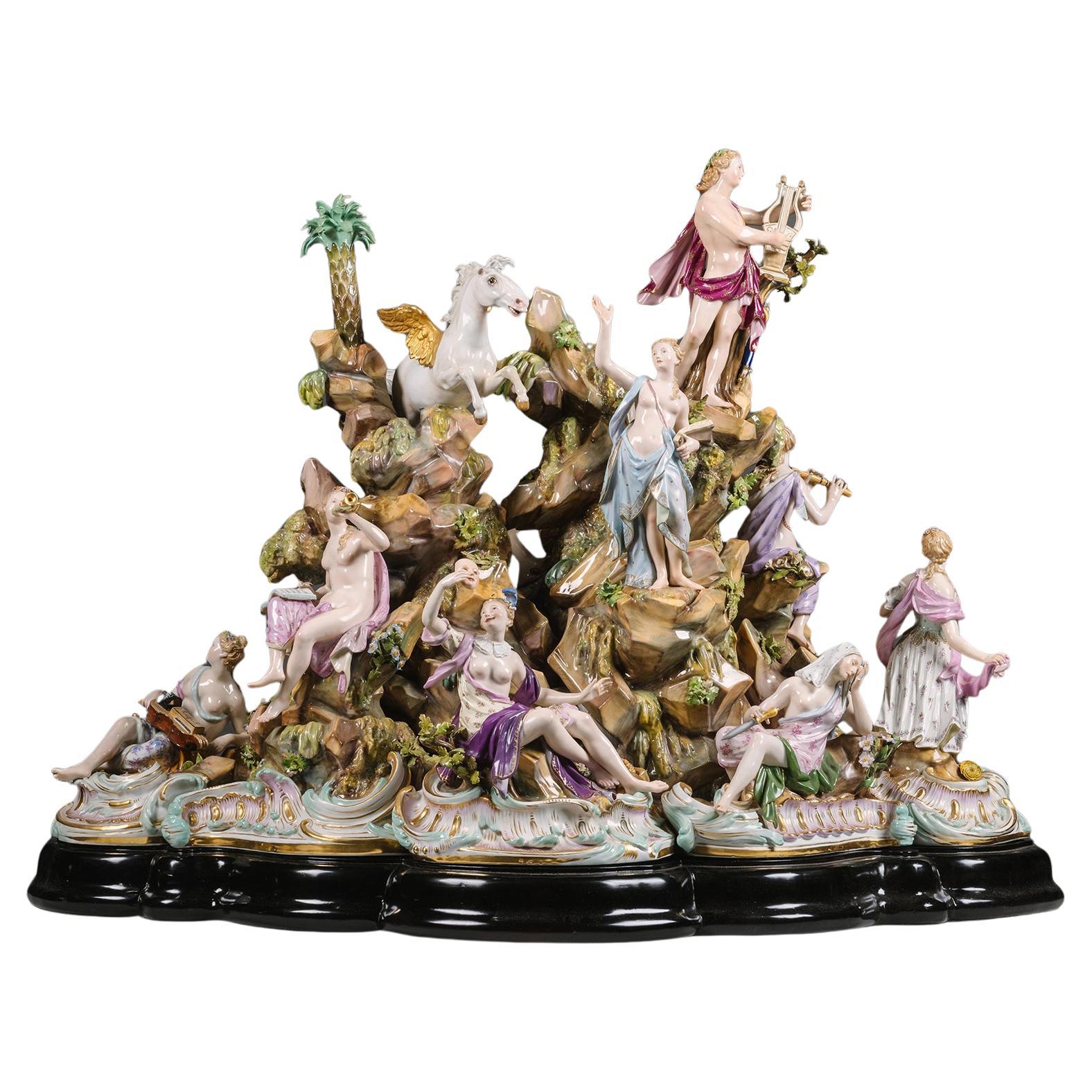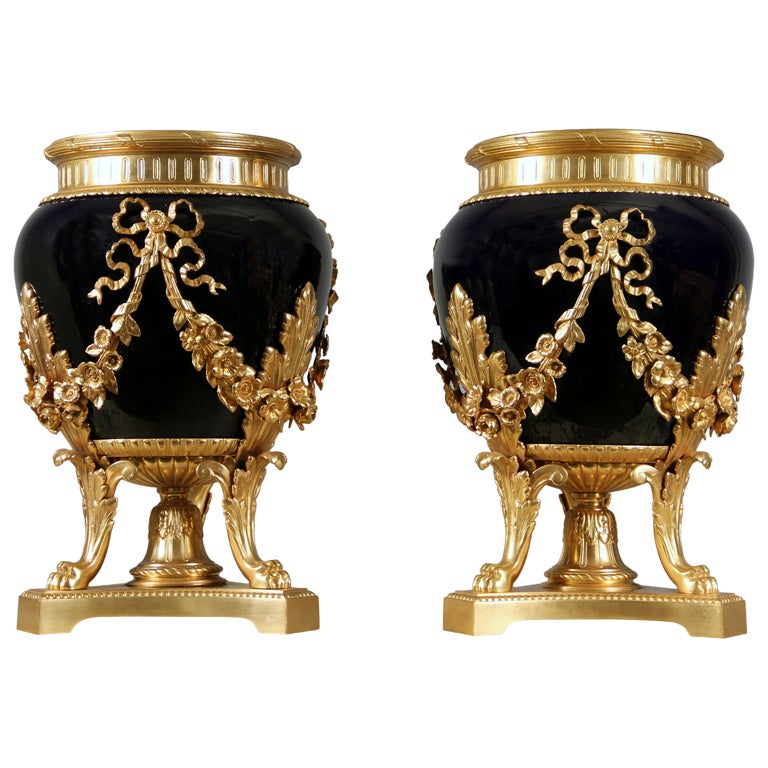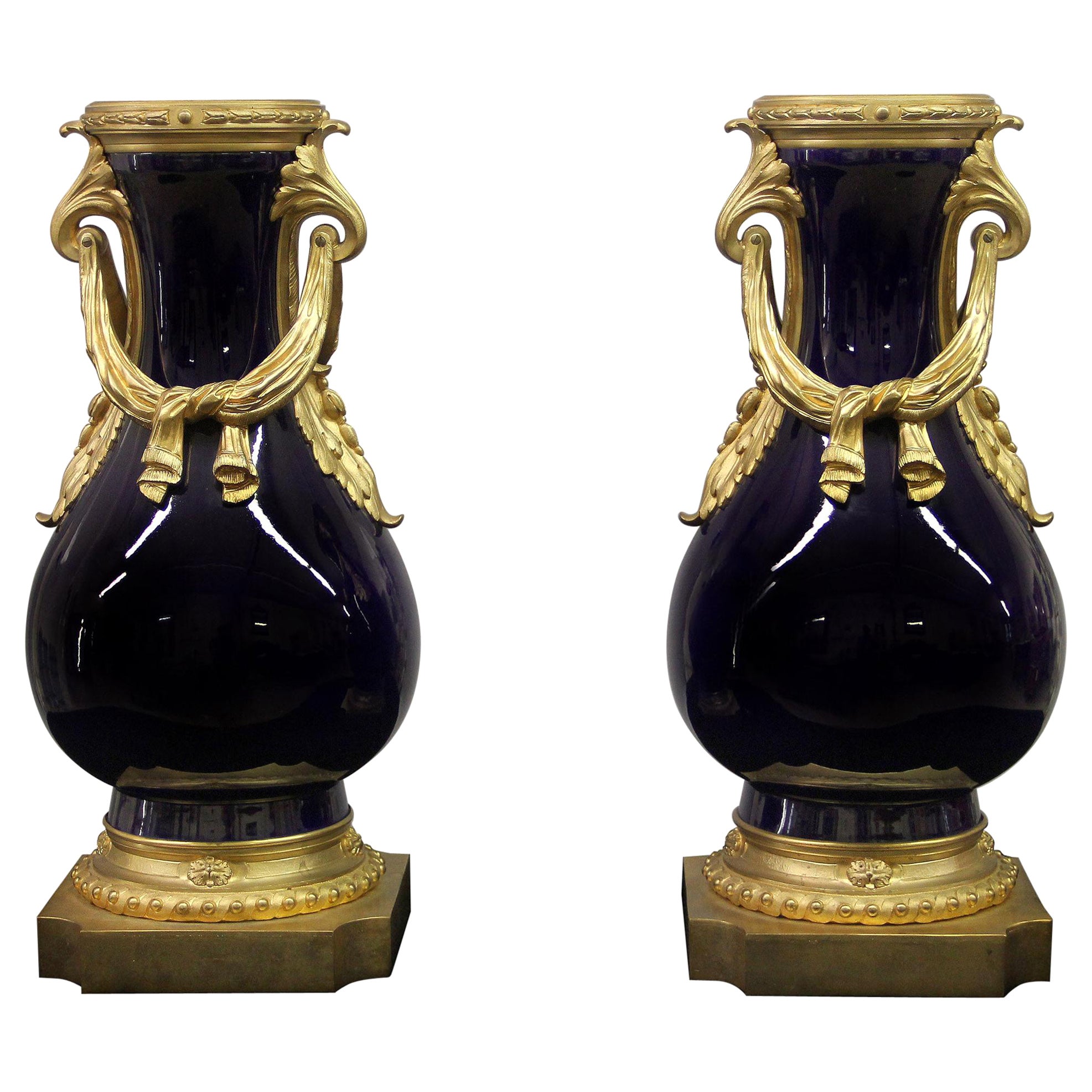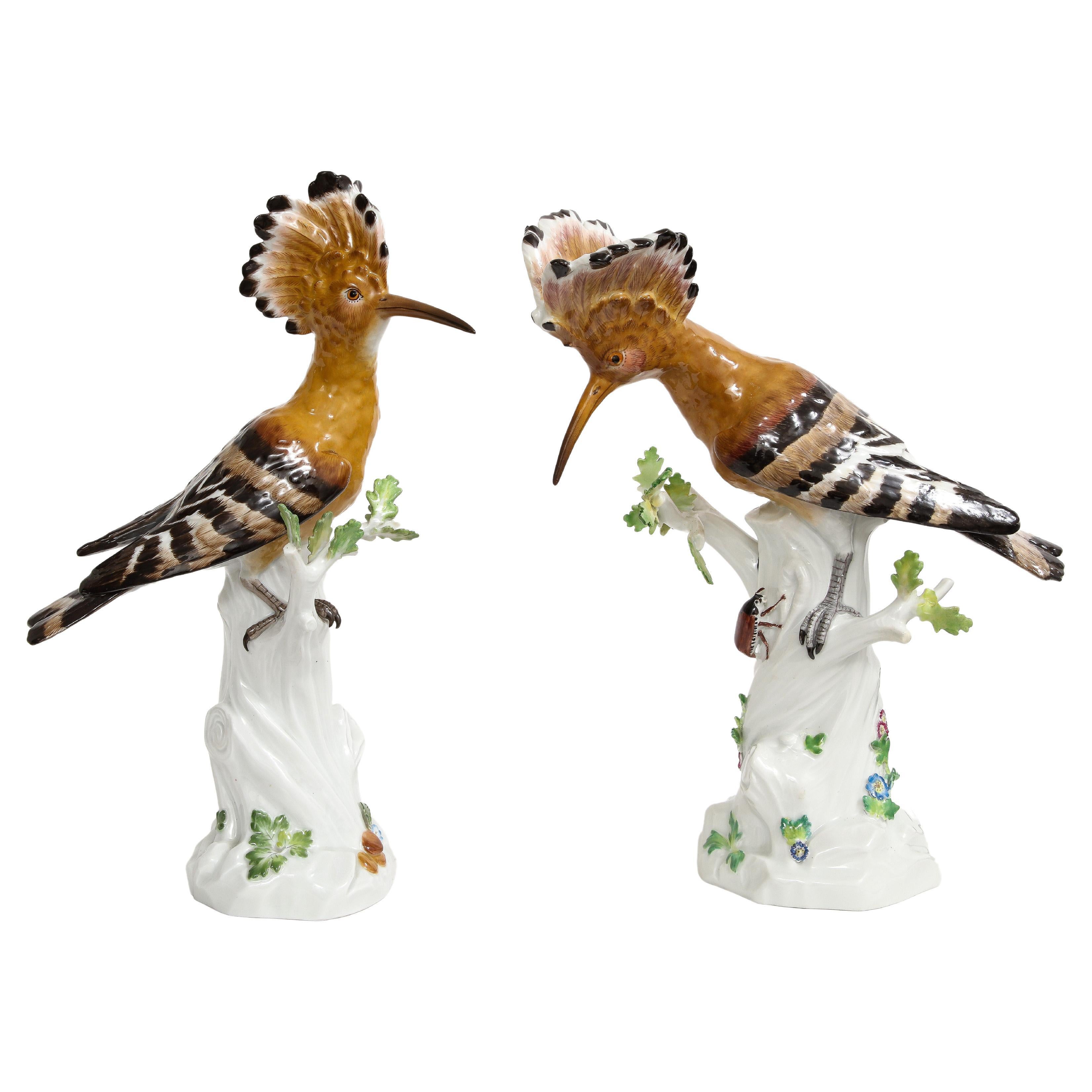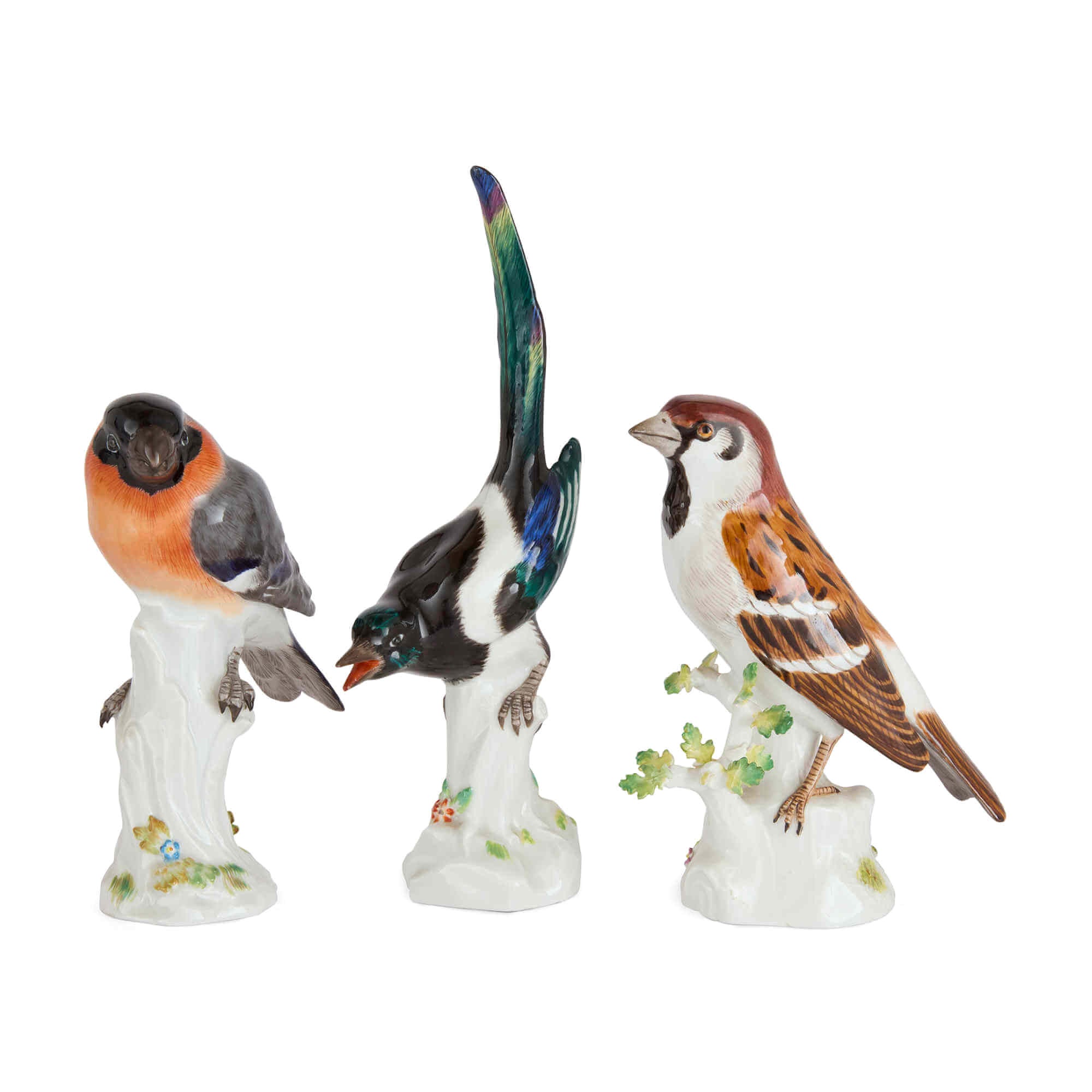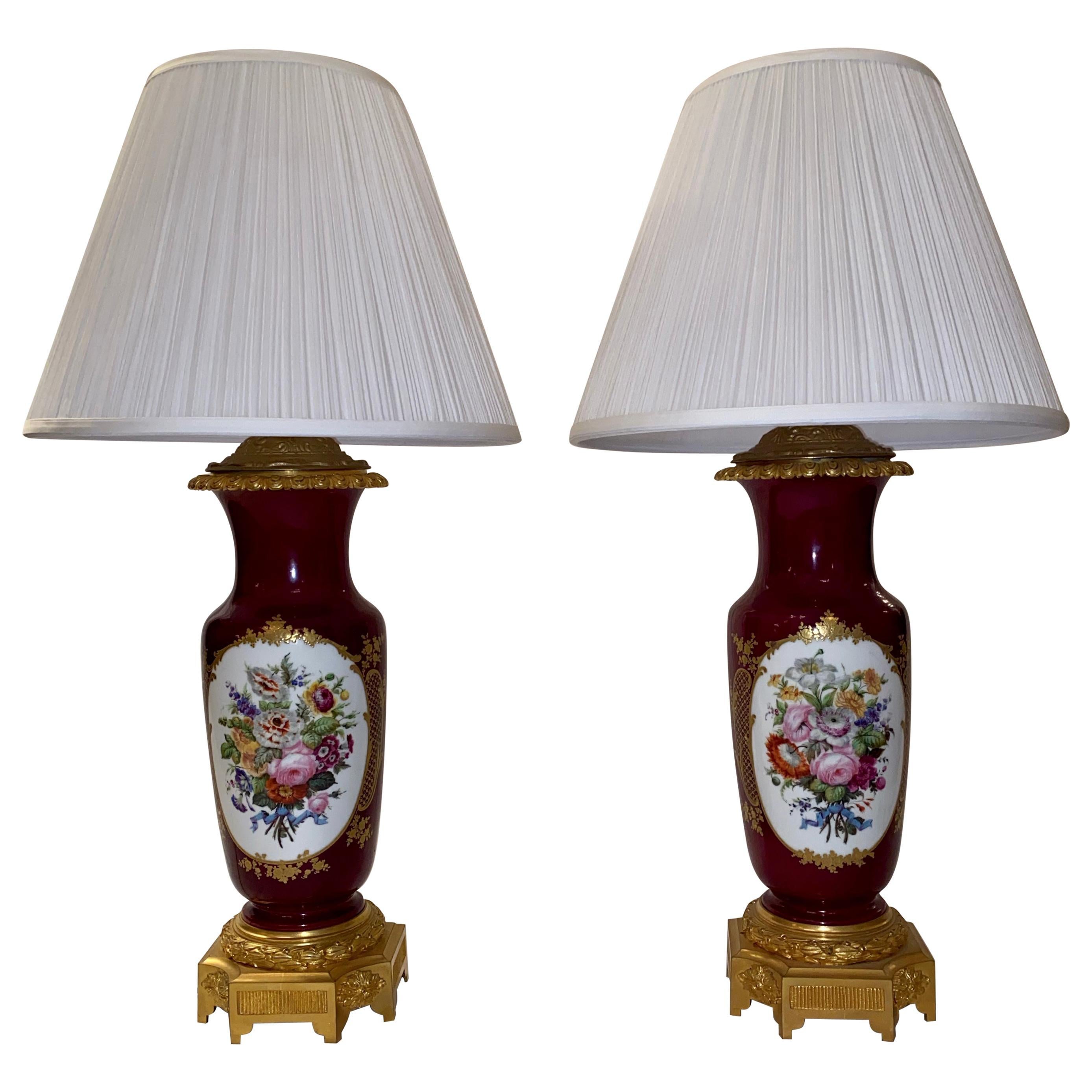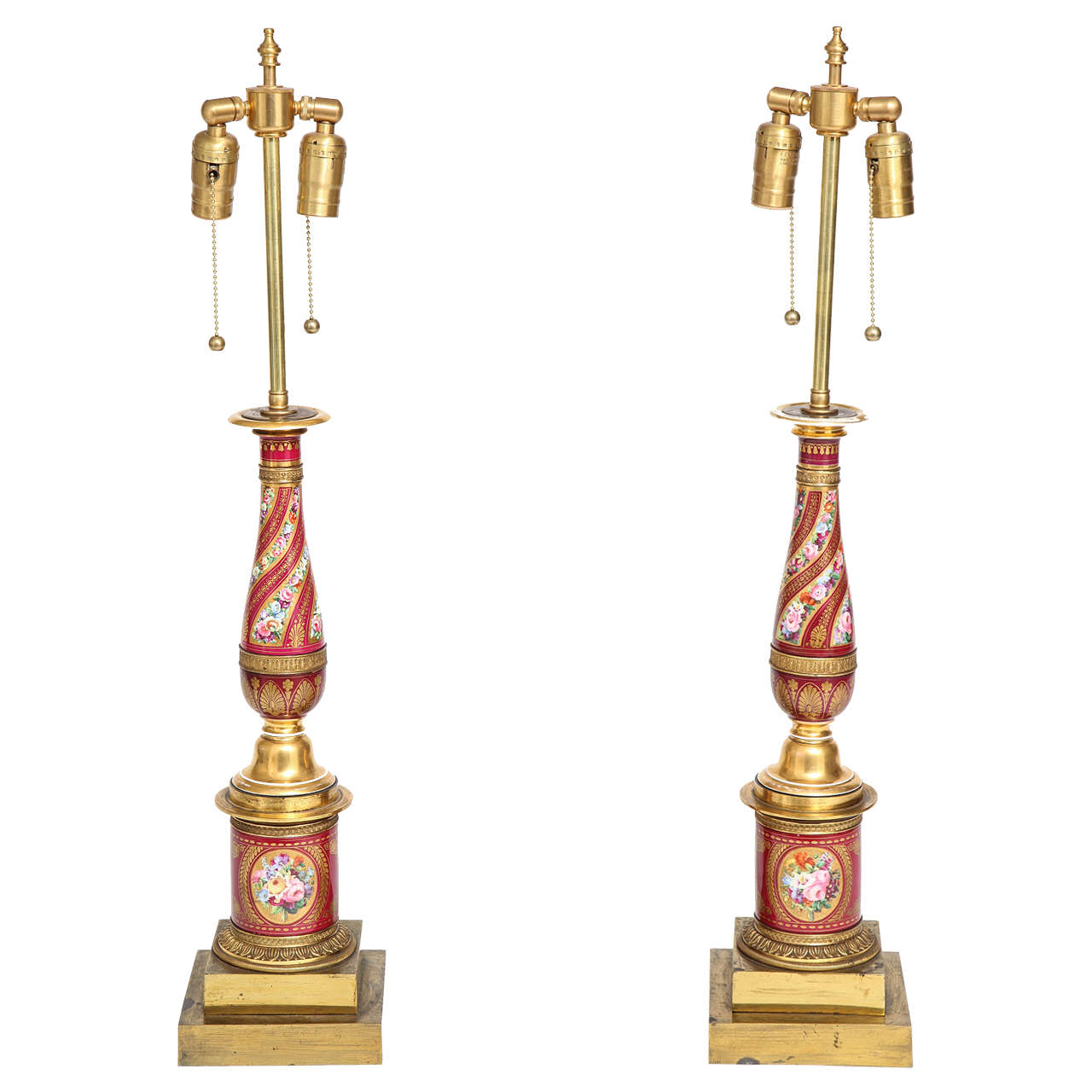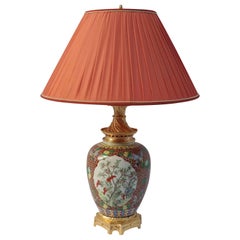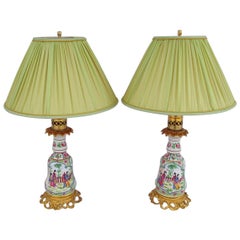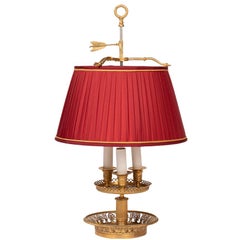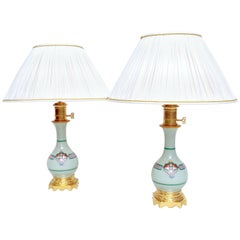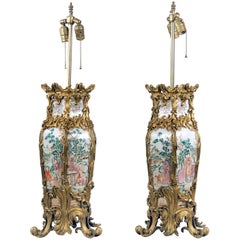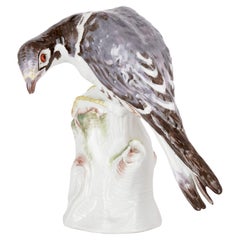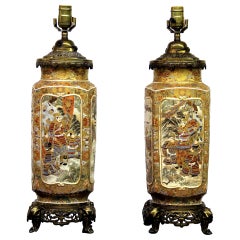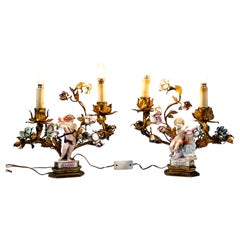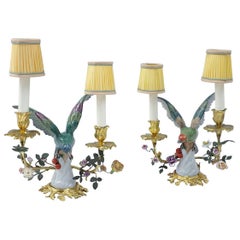
Pair of Meissen Style Birds Porcelain Lamps, Gilt Bronze Mount, 1900 Period
View Similar Items
Want more images or videos?
Request additional images or videos from the seller
1 of 10
Pair of Meissen Style Birds Porcelain Lamps, Gilt Bronze Mount, 1900 Period
About the Item
- Similar to:Meissen Porcelain (Manufacturer)
- Dimensions:Height: 18.12 in (46 cm)Width: 12.6 in (32 cm)Depth: 6.7 in (17 cm)
- Sold As:Set of 2
- Style:Belle Époque (Of the Period)
- Materials and Techniques:
- Period:
- Date of Manufacture:circa 1900
- Condition:Wear consistent with age and use.
- Seller Location:Saint-Ouen, FR
- Reference Number:Seller: LS36891stDibs: LU959111168651
About the Seller
5.0
Vetted Professional Seller
Every seller passes strict standards for authenticity and reliability
Established in 1990
1stDibs seller since 2012
269 sales on 1stDibs
Typical response time: 22 hours
Authenticity Guarantee
In the unlikely event there’s an issue with an item’s authenticity, contact us within 1 year for a full refund. DetailsMoney-Back Guarantee
If your item is not as described, is damaged in transit, or does not arrive, contact us within 7 days for a full refund. Details24-Hour Cancellation
You have a 24-hour grace period in which to reconsider your purchase, with no questions asked.Vetted Professional Sellers
Our world-class sellers must adhere to strict standards for service and quality, maintaining the integrity of our listings.Price-Match Guarantee
If you find that a seller listed the same item for a lower price elsewhere, we’ll match it.Trusted Global Delivery
Our best-in-class carrier network provides specialized shipping options worldwide, including custom delivery.More From This Seller
View AllLarge Green Family Porcelain and Gilt Bronze Mount Lamp, circa 1880
Located in Saint-Ouen, FR
Large vase shaped porcelain lamp.
Green family porcelain on a red background, decorated with interlaces, flowers and butterflies. Plants in reserve in two white background cartouches...
Category
Antique Late 19th Century Chinoiserie Table Lamps
Materials
Bronze
Bayeux Porcelain Pair of Lamps, Canton Style, 19th Century
Located in Saint-Ouen, FR
Pair of Bayeux porcelain lamps on a white background with a polychromatic decoration in the Chinese Canton style porcelain. On one side, a scene with Chinese dignitaries on a cartouc...
Category
Antique Late 19th Century Chinese Export Table Lamps
Materials
Bronze
Restauration Style Bouillotte Lamp in Gilt Bronze, 1900 Period
Located in Saint-Ouen, FR
Restauration style bouillotte lamp in gilt bronze with three fires.
Circular base with foliage scrolls openwork edges topped by a small fluted column which supported a circular cup s...
Category
Early 20th Century French Restauration Table Lamps
Materials
Bronze
Pair of Celadon Porcelain Lamps with Persian Style Flowers, Late 19th Century
Located in Saint-Ouen, FR
Pair of celadon porcelain lamps with on a gilt bronze mounting. Decoration of stylized vegetal frieze in the Persian taste.
Refurbished electric system.
Work realized at the end of the 19th century.
! The price doesn’t include the lampshade price. However, our workshop can advise you with pleasure and realize it with your size and color choices !
Celadon designates both a color and a type of ceramic specific to China and the Far East. "Celadon Green": it's a color name designating a shade of green. Celadon is particularly appreciated in Asia, because it allows to obtain the color of jade, the sacred stone. The name celadon is today almost always associated with porcelain, usually Chinese. In French, the origin of the word comes from Honoré d...
Category
Antique Late 19th Century Table Lamps
Materials
Bronze
Pair of Brown and Blue Porcelain Lamps, Japanese Style, Late 19th Century
Located in Saint-Ouen, FR
Pair of baluster shape brown and blue porcelain lamps. Decoration of Japanese style figures in a cartouche framed with vegetals and flowers with deep blue and gold highlights.
Mounte...
Category
Antique Late 19th Century Japonisme Table Lamps
Materials
Bronze
Pair of Iridescent Celadon Porcelain Lamps, circa 1880
Located in Saint-Ouen, FR
Pair of bottle shapped iridescent celadon porcelain lamps. Chiseled and gilt bronze mount on an openwork circular base decorated with cartouches and swirls, two openwork handles and ...
Category
Antique Late 19th Century French Napoleon III Table Lamps
Materials
Bronze
You May Also Like
Pair of Late 19th Century French Gilt Bronze Mounted Chinese Porcelain Lamps
Located in Long Island City, NY
A Nice Quality Pair of Late 19th Century French Gilt Bronze Mounted Chinese Porcelain Lamps
Fine bronze mounts separate the six painted panels decorated with chinoiserie figures in ...
Category
Antique Late 19th Century French Belle Époque Table Lamps
Materials
Bronze, Ormolu
Meissen Porcelain Bird Model
By Meissen Porcelain
Located in London, GB
A Meissen porcelain bird model
German, late 19th century
Measures: height 15cm, width 15cm, depth 9cm
This elegant miniature, of a ptarmigan or sim...
Category
Antique Late 19th Century German Belle Époque Animal Sculptures
Materials
Porcelain
Pair of Late 19th Century Gilt Bronze and Japanese Satsuma Porcelain Lamps
By Satsuma
Located in Long Island City, NY
A beautiful pair of late 19th century gilt bronze and Japanese Satsuma porcelain lamps
Each side with painted panels, the front and back depicting samurai warriors, the sides with...
Category
Antique Late 19th Century Japanese Belle Époque Table Lamps
Materials
Bronze
Pair Of Meissen Bronze Table Lamps With Motto Children, by MV Acier, 1775-1814
By Meissen Porcelain, Michel Victor Acier 1
Located in Vienna, AT
With porcelain figures from the original period of origin around 1775:
Two electrified bronze lamps with gilding: a profiled pedestal in a triangular shape with beveled corners as a ...
Category
Antique Late 18th Century German Rococo Porcelain
Materials
Bronze
A Monumental Meissen Porcelain Figural Group of Mount Parnassus
By Meissen Porcelain
Located in Brighton, West Sussex
A Monumental Meissen Porcelain Figural Group of Apollo and the Nine Muses on Mount Parnassus.
Comprised of sixteen interlocking parts. Apollo standing holding a lyre and with Pegasus besides a tree, atop a rocky outcrop detailed with foliage and waterfalls above nine goddesses:
Calliope, seated and shown writing, representing eloquence and epic poetry.
Clio, seated with an open book and blowing a trumpet, representing history.
Erato, seated and holding a kithara, representing science and the arts
Euterpe, seated and holding a flute, representing music.
Melpomene, seated holding a knife and with one hand to her head, representing tragedy.
Thalia, seated and holding aloft mask, representing comedy and idyllic poetry.
Urania, seated with telescope and globe, representing astronomy and astrology,
Polyhymnia, standing with one hand raised and holding a book, representing sacred poetry.
Terpsichore, standing, representing dance.
Each piece exceptionally finely detailed and painted. The base portions with rocaille edges. On a later black polished wooden base.
Multiple blue crossed swords marks. Each piece titled to underside.
German, Circa 1880.
Mount Parnassus, is a spur of the Pindus Mountains in central Greece and was sacred to the ancient Greeks and in mythology to Apollo, the god of music and poetry and of the Sun and light. Mount Parnassus the mythical centre of poetry, music, and learning in ancient Greece was a popular theme in Barqoue and Rococo art, often substitutable with Athena’s arrival at Mount Helicon from the fifth book of Ovid’s “Metamorphoses”, where she asks the Muses to show her the new spring which gushed forth from the spot where Pegasus “with his hoof of horn opened the earth” (V, 250-260).
Here, the mountain, formed from rugged rock cliffs, culminates in a plateau on which the youthful Apollo stands and plays the lyre. The Castalian spring flows from beneath Pegasus’ hoof, representing the source of inspiration and attracting the nine muses, who embody the arts and inspire creation through song, music, and dance.
Mount Parnassus was created at the Meissen porcelain manufactory as a table centrepiece and an earlier version, apparently with only five muses, is listed in the inventory of the pastry shop of the Meissen manufactory manager and cabinet minister Heinrich Graf Brühl in 1753. The storage in the pastry shop of approximately 3,000 objects and dishes, including many individual parts for centrepieces, is related to their function as table decorations, replacing decorations previously made by the confectioner from perishable materials such as sugar or wax.
The purpose of this table decoration was as a feast for the eyes to accompany the feast of the banquet. The sculptural figurines often depicted a particular theme, with characters drawn from theatre and opera, from classical mythology or pastoral idylls. Allegories and mythological themes, such as the glorification of fine arts, were also popular. Stylistically, Mount Parnassus fits Kändler’s style of the 1740s, and was sold by Brühl in 1762 to Frederick the Great of Prussia who used mythology as a means of self-expression and had already ordered individual figures of Apollo and the Muses as table decorations in 1744. Today it is in the Museum of Applied Arts, Frankfurt (inv. no. M.L. 41). There is another version of Mount Parnassus, from the collection of Prince Alexander Dolgorukoff, in the Hermitage in Saint Petersburg.
The present version dates to the second half of the nineteenth century when there was a great revival of Kändler rococo figurines which were reissued and a “Second Rococo”. Another nineteenth century example is in the collection of the Museo Francesco Borgogna, Italy (inv. 1906, XIII, 19-20). These nineteenth century versions were made by the Meissen factory using Kändler's period models. It is recorded that a new version of Mount Parnassus, dating to the 1880s, was part of the Royal Porcelain collection in Dresden:
'In the porcelain collection there is a new version from the 1880s based on the old models, the largest group of this genre, the Parnassus, which shows the named muses all around on the lower part of the rock, each practising their own art, while on the top there is Apollo with the lyre and next to it the Castalian spring rises from the hoofbeat of Pegasus. Each figure is executed individually with its rocky background, and all the pieces are then fitted together, as we have already seen in his earlier, larger compositions. The rock pieces are finished off like a pedestal at the bottom with Rococo ornaments.' (Jean Louis Sponsel, Kabinettstücke der Meissner Porzellan-manufaktur von Johann Joachim Kändler, Leipzig, 1900, pp. 203-204).
Kunst und kunsthandwerk; monatsschrift herausgegeben vom Österreichischen museum fuer kunst und industrie, Vienna, 1894, v.7 pt.1, p.133.
Kari Berling, Das Meißner Porzellan und seine Geschichte. Leipzig 1900, S. 99, 187-200.
Helmuth Gröger, Johann Joachim Kaendler. Dresden, 1956.
Peter W Meister, Franz Adrian Dreier, Figürliche Keramik aus zwei Jahrtausenden. Kat Museum für Kunsthandwerk, Frankfurt. Frankfurt 1964, Nr. 90.
Rainer Rückert, Meißener Porzellan, 1710-1810. Kat. Ausst. Bayerisches Nationalmuseum München. München 1966.
Stefan Bursche, Tafelzier des Barock. München 1974, Abb. 300.
"Tafelaufsatz, Der Parnass", Auswahlkatalog, Museum für Kunsthandwerk (Frankfurt am Main, Germany), 1987, pp. 86-87.
Alfred Ziffer, ‘Meissener Porzellanplastik für fürstliches Interieur und Zeremoniell’, Keramos, Issue 241/242, pp. 29–52.
MEISSEN
The production of Meissen porcelain began in 1710 at the manufactory at Meissen...
Category
Antique 19th Century German Rococo Porcelain
Materials
Porcelain
Pair of Late 19th Century Gilt Bronze Mounted Sèvres Style Porcelain Planters
Located in Long Island City, NY
Pair of Late 19th Century Gilt Bronze Mounted Sèvres Style Porcelain Planters
Each urn mounted with bow tied ribbons connected in the front and back with a foliate swags.
In late 1...
Category
Antique 19th Century French Belle Époque Vases
Materials
Bronze, Ormolu
$14,000 Sale Price / set
20% Off
Recently Viewed
View AllMore Ways To Browse
Meissen Gold Gilt
Meissen Frame
Bras Lamp
Meissen Bird Pair
Meissen Lamps Antique
Meissen Porcelain Table Lamp Pair
Gold Square Lamp
Pair Fabric Table Lamps
Candlestick Lamps
Chain Table Lamp
Deco White Glass Lamps
Natural Stone Table Lamp
Pink Mid Century Lamp
Pink Midcentury Lamp
Spiral Lamps
Hand Carved Wood Table Lamp
Metal Lamps Gold Vintage
Ribbon Lamp
